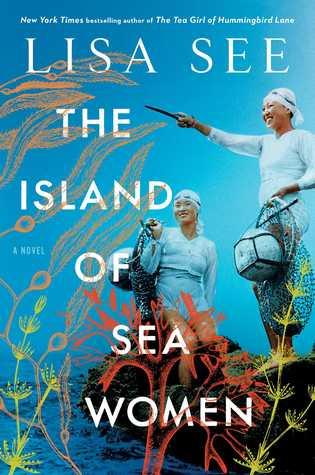This is my second novel by Lisa See, and I felt they were similar in a lot of ways. Both Island of Sea Women and The Tea Girl of Hummingbird Lane are slow-paced multigenerational family dramas, that cover a primary character from childhood to old age. Both concentrate a great deal on history and culture. Both involve a move from Asia to the United States. And in both books I learned quite a lot about something I didn’t know. In The Tea Girl of Hummingbird Lane, that was the art and industry of tea-growing. And in The Island of Sea Women, it was the haenyeo, the women’s diving collective of Jeju Island. See does a great job in both books of making these practices come alive, with rich details and by really showing how they influence everything from the economy to politics to family relationships.

The Island of Sea Women is about a friendship that begins in childhood between Young-sook and Mi-ja on the South Korean Jeju Island. Young-sook’s mother is the head of the local diving collective, and she’s expected to become a diver as well. Mi-ja’s father is a Japanese collaborator, so she’s shunned by the Islanders. Both girls train as “baby divers” so that eventually they will be able to earn a living for their families. In this society, the divers are in charge of their families, financially and physically, while the husbands take care of the children.
Mi-ja and Young-sook form a close friendship, until their married lives create conflicts which are exacerbated by the terrifying events related to the division of Korea after World War II.
See tells this story in a fairly traditional way, beginning in 2008 and then going back in time. Young-sook, an elderly woman, is collecting algae and talking with tourists when she’s approached by a Korean-American family asking about Mi-ja. Young-sook then recounts her childhood in the 1930s and the story proceeds chronologically until it catches up with 2008. I don’t love books with parallel timelines, but I liked that See kept most of this book focused on the past, gradually bringing us up to the present day.
I appreciated the fact that even though this is about a close friendship, there are numerous differences between the girls, from family background to appearance to financial and social status. These factors create subtle jealousy and resentment between the two women, making their relationship complicated.
Where See excels is in the vivid historical and cultural detail she brings to the story. The pace is slow but doesn’t shy away from conflict. As readers we experience what it’s like to learn to dive, to lose family and friends to the sea, and to suffer from political unrest.
Readers view the culture and history of Jeju Island (and of Korea more generally) through Young-sook’s eyes. She’s a well-developed, if frustrating, character. She grows over time in some ways, such as her views of women and education, but we also see her stubbornness and her refusal to accept the views of others. I could understand her resentment towards Mi-ja, or at least I understood there was no way I could put myself in her place after what she experienced. But she’s a sad figure due to her unwillingness to let go of her anger.
For me the challenge of this book was keeping track of the character names, especially across multiple generations and family members. I listened this book on audio, and I appreciated hearing how the words and names were pronounced, which made me feel more immersed in the culture. However, the downside was that it’s much easier for me to distinguish names and places if I see them in print.
This was not an easy read, covering many characters and decades, and there’s at least one part of the book that is violent and deeply disturbing. But with that warning, I highly recommend this book. Like The Tea Girl of Hummingbird Lane, I found the characters and the story memorable and compelling, and I loved learning so much about the history and culture of a place I know little about.
Note: I read this book for the TBR Pile challenge, the Backlist Reader challenge, and the Reading Historical Fiction Challenge.

